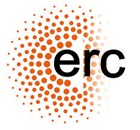NILOMORPH: The evolution of suprasegmental morphology in West Nilotic
Project Overview
Project
NILOMORPH: The evolution of suprasegmental morphology in West Nilotic
Project members:
MORPHOLOGY team (Surrey)
Matthew Baerman (PI)
Oliver Bond
Irina Monich (Wayne State University)
Stefon Flego (University of New Mexico)
Volya Kapatsinksi (University of Oregon)
DESCRIPTION team (Freie Universität Berlin)
Bert Remijsen (PI)
Tatiana Reid
Mirella Blum
RECONSTRUCTION team (CNRS)
Lameen Souag (PI)
Enrique Palancar
Stefano Manfredi
Rozenn Guérois
Guillaume Jacques
Period of award
July 2025-June 2031
Funder:
European Research Council Synergy Grant
NILOMORPH sets out to explain how linguistic evolution took a highly unexpected turn in one family of languages spoken in East Africa. They have evolved a morphological system where multiple grammatical categories are expressed simultaneously within a single syllable, through subtle modulations of its phonological properties. For example, in the Dinka language the word tèm, meaning ‘to cut’, can be made to mean ‘she cuts it for someone’ by lengthening the vowel, changing the low tone to high, and pronouncing it with breathy voice quality: té̤ːm, and more than dozen other contrasts can be generated by similar means. A single monosyllabic word in language like Dinka attains a degree of information density unparalleled elsewhere in the languages of the world. Surprisingly, comparative evidence suggests that the West Nilotic languages were once much more conventional, using suffixes to mark grammatical categories. As has happened in many other languages, such as English, these suffixes were lost over time. But rather than simply disappearing, they were transformed into suprasegmental phonological properties pronounced concurrently with the word stem. The aim of NILOMORPH is to reconstruct this evolution. But because of the extreme rarity of this morphological type, we need to explain not just how it happened here, we also have to explain why it did not happen in other language families. It is therefore not enough just to retrace the history of linguistic forms. NILOMORPH proposes a transformative step in historical linguistics: the reconstruction not just of external features, but of the cognitive motivation behind them. This will be achieved through the synergy of three teams, DESCRIPTION, MORPHOLOGY and RECONSTRUCTION, employing a combination of field linguistics, acoustic analysis, experimental linguistics, computational simulation, typology, and the historical-comparative method.


